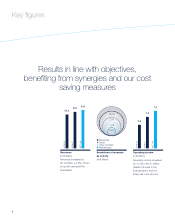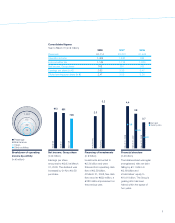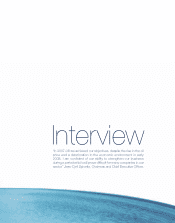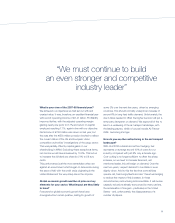Air France 2008 Annual Report Download - page 16
Download and view the complete annual report
Please find page 16 of the 2008 Air France annual report below. You can navigate through the pages in the report by either clicking on the pages listed below, or by using the keyword search tool below to find specific information within the annual report.
16
Strategy
Air transportation faces
three major challenges: the oil price,
competition and the environment
As of its inception, air transportation has been evolving
and the sector will see profound change over the next
decade. In an increasingly liberalized universe, only a few
large companies which benefit from sound networks,
powerful hubs and modern fleets will be able to contend
with competition, the rise in the oil price and increasingly
demanding environmental standards and thus remain
master of their own strategies.
Increased competition
In Europe, three large groups have emerged over the past
few years: Air France-KLM, Lufthansa and British Airways.
While Lufthansa has growth ambitions in long-haul,
supported by partnerships to attract traffic to its Frankfurt
and Munich hubs, British Airways continues to refocus its
business on high contribution flows out of London. The
opening of Heathrow to competition on the North Atlantic
will, furthermore, increase competition in its principal
market. The US airlines are prioritizing international
growth, notably on the North Atlantic, which is more
profitable than their domestic business. The Gulf airlines
are becoming serious competitors on flows for which their
geographic positioning is attractive. In the future, powerful
Chinese and Indian players could emerge.
In medium-haul, low cost carriers currently account for
nearly 40% of capacity. In order to achieve their growth
objectives, they are evolving towards a hybrid business
model to attract, specifically, business traffic and intensifying
their direct competition with the network companies. In the
French network, in addition to the growth in low cost
capacity, Air France has to contend with the extension of
the TGV high speed rail service. Within this context,
the Group is preparing for full market liberalization by
developing its European positioning, fine-tuning its
capacity and controlling its costs.
























